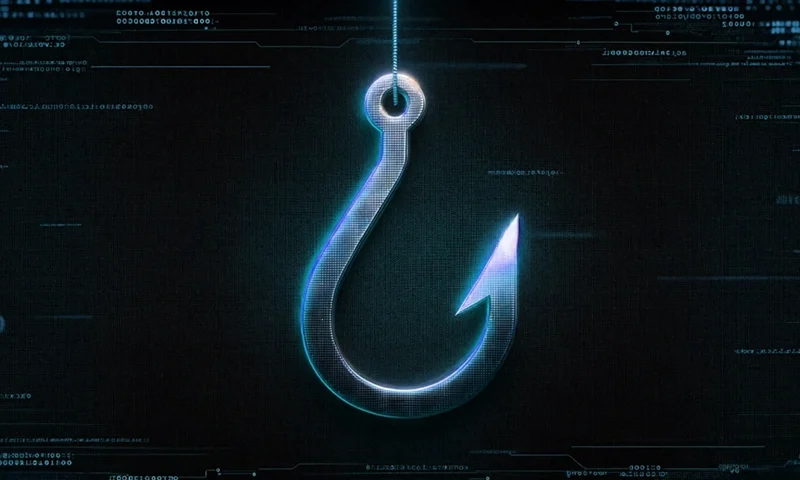
Unlocking Efficiency: The Benefits of Single Sign-On (SSO) for Enterprises
March 17, 2025
Key Factors to Consider When Choosing a Managed Security Service Provider (MSSP)
March 17, 2025Understanding Credential Phishing
Credential phishing is a type of cyberattack aimed at acquiring sensitive information such as usernames, passwords, and other confidential data by masquerading as a trustworthy entity. This malicious activity often occurs through deceptive emails, websites, or messaging applications that resemble legitimate communications. Consequently, unsuspecting users may inadvertently disclose their credentials, exposing themselves to identity theft, financial loss, or unauthorized access to online accounts. The primary modus operandi of credential phishing involves tricking users into entering their sensitive information into fake login pages that closely mimic the real ones.
In recent years, the sophistication of phishing techniques has significantly increased, making it essential for individuals and organizations to grasp the nuances of this growing threat. Cybercriminals leverage various social engineering tactics to manipulate victims, often using familiar language or urgent requests to create a sense of legitimacy. Attackers may adopt strategies such as spoofing email addresses or employing lookalike domains to further disguise their true intentions. The underlying motivation for these attacks typically centers around financial gain, whether through direct theft of funds or by selling the acquired credentials on the dark web.
Credential phishing poses a substantial threat in the digital landscape as more individuals and organizations rely on internet services for daily activities. The increasing prevalence of remote work and online transactions has created a fertile ground for cybercriminals, amplifying the urgency for robust security measures. Effective tactics to combat credential phishing include educating users about recognizing suspicious communications, implementing multifactor authentication, and deploying advanced security technologies. By fostering a comprehensive understanding of how credential phishing operates and the techniques employed by attackers, individuals and organizations can better equip themselves to defend against this imminent threat.
Myth #1: Credential Phishing Only Happens via Email
One of the most pervasive misconceptions surrounding credential phishing is the belief that these attacks are confined to email communications. While it is true that email remains a primary vector for phishing attempts, the reality is that attackers utilize a multitude of platforms and methods to conduct their malicious activities. Understanding these alternative approaches is essential for developing a comprehensive defense strategy.
Social media platforms, for example, have become increasingly popular among cybercriminals for executing phishing attacks. Attackers often impersonate legitimate entities, creating fake profiles to entice users into providing their personal information or clicking on harmful links. This method not only captures user attention but also leverages the trust people place in their social connections, making them more susceptible to falling for these scams.
Additionally, the rise of SMS marketing has led to the proliferation of smishing, or phishing via SMS. Attackers can send text messages that appear to originate from trusted sources, such as banks or popular online retailers. These messages frequently contain urgent alerts or offers, thereby compelling users to respond quickly, often without fully scrutinizing the request for their credentials. Victims may find themselves unwittingly providing sensitive information in response to these deceptive texts.
Voice calls, too, play a significant role in the landscape of credential phishing. Known as vishing, this method involves attackers contacting victims directly, often using caller ID spoofing to present themselves as legitimate organizations. During these calls, the perpetrators might create a sense of urgency, convincing individuals to divulge confidential information, further exploiting their trust.
In summary, it is critical to recognize that credential phishing is not limited to email. By understanding the diverse tactics employed by cybercriminals, including social media, SMS, and voice calls, individuals can better protect themselves against these threats and guard their credentials effectively.
Myth #2: Only Uninformed People Fall for Phishing Scams
The belief that only uninformed individuals are victims of phishing scams is a misconception that overlooks the complexity of human behavior and the sophistication of modern phishing techniques. Phishing attacks have evolved dramatically, employing advanced social engineering tactics that can deceive even the most experienced internet users. These scams are designed to manipulate psychological triggers, exploiting emotions such as fear, curiosity, or urgency to prompt hasty decisions.
Experienced users may possess a general awareness of phishing and implement robust security practices, yet they can still fall prey to these malicious schemes. Cybercriminals often craft emails or messages that closely mimic legitimate communications from trusted entities, making it increasingly difficult to distinguish between genuine and fraudulent interactions. For example, they might replicate established brands or exploit recent events, creating a sense of urgency around login requests or financial transactions.
Furthermore, the psychological aspect of phishing cannot be understated. No matter how knowledgeable an individual may be regarding online security protocols, they may still experience moments of doubt or be swayed by compelling narratives presented in phishing schemes. The pressure to respond quickly, especially in a work context, can lead even the most aware users to unknowingly click on harmful links or provide sensitive credentials.
This highlights the importance of continuous education and awareness for all internet users, regardless of their experience level. Vulnerability to phishing attacks is not solely determined by lack of knowledge but rather the interplay between sophisticated tactics and human psychology. Consequently, it is essential for organizations and individuals alike to develop a multifaceted approach to cybersecurity that encompasses ongoing training and vigilance against phishing threats.
Myth #3: Phishing Attacks Are Easy to Spot
A widespread belief is that phishing attempts can be easily identified due to obvious indicators such as poor grammar or suspicious email addresses. However, this notion significantly underestimates the advanced techniques cybercriminals employ in their phishing tactics. Over the years, phishing schemes have evolved from clumsy, poorly executed messages to highly sophisticated and convincing communications that can easily deceive even the most vigilant users.
In today’s digital landscape, phishing emails often mimic legitimate communications from reputable organizations. Attackers invest time and resources to create messages that closely resemble official correspondence, employing visually appealing designs, accurate logos, and even personalized information that can make the email appear legitimate. For example, a phishing email may come from what appears to be a trusted bank, incorporating official language and legal disclaimers to further enhance its authenticity. This level of craftsmanship renders many phishing attempts deceptively hard to recognize.
Case studies provide tangible evidence of this sophistication. One notable example involved a phishing campaign that targeted employees of a well-known corporation. The attackers cleverly crafted emails that not only used the company’s email format but also referenced specific projects and personnel, making it difficult for recipients to question the legitimacy of the communication. Scammers frequently use social engineering techniques to exploit human trust, effectively leading individuals to follow harmful links or inadvertently divulge sensitive information.
As users become more aware of traditional phishing signs, cybercriminals will continue to adapt. Thus, it is crucial to maintain a healthy skepticism toward unsolicited communications, even when they appear credible. The key lies in remaining vigilant, verifying the source of the email, and using security measures such as two-factor authentication to protect against such evolving threats.
Myth #4: I Don’t Need to Worry if I Have Antivirus Software
Many individuals believe that having antivirus software is a comprehensive solution to ward off all cybersecurity threats, including credential phishing. While antivirus programs certainly play a vital role in the defense against malware and malicious software, they are not an all-encompassing shield against phishing attacks. Credential phishing is primarily a social engineering tactic that exploits human psychology rather than relying solely on technology to succeed.
Antivirus software functions by scanning files and emails for known viruses and malware signatures. It can identify and eliminate harmful programs, but phishing attacks often do not involve malware installation. Instead, these attacks may utilize deceptive emails or websites that impersonate legitimate entities to trick individuals into revealing sensitive information like usernames and passwords. Consequently, even the most sophisticated antivirus software can be ineffective if a user is not vigilant when interacting with suspicious messages or links.
Moreover, antivirus solutions are reactive, meaning they must first recognize a threat before they can defend against it. With the constantly evolving tactics employed by cybercriminals, new phishing techniques can emerge that evade detection by existing antivirus software. To compound the issue, users may inadvertently disable or disregard alerts from their antivirus programs, creating a false sense of security.
Thus, while antivirus software remains an essential component of an overall cybersecurity strategy, it is crucial for users to supplement this protection with heightened awareness, critical thinking skills, and proactive behaviors. This involves being cautious about unsolicited communications, verifying the authenticity of requests for personal information, and educating oneself on the indicators of potential phishing attempts. Ultimately, user vigilance is just as important as technological solutions in fortifying defenses against credential phishing.
Myth #5: Reporting Phishing Attempts Is Pointless
The belief that reporting phishing attempts is futile stands in stark contrast to the reality of cybersecurity efforts. In truth, reporting these incidents plays a crucial role in combating credential phishing and preserving online security. When individuals report phishing attempts, they contribute valuable data that organizations can use to track and analyze these threats. This information can help identify trends, develop preventive measures, and enhance public awareness.
Organizations such as email service providers, internet service providers, and cybersecurity companies rely on reports from users to fortify their defenses against phishing scams. For instance, when a phishing attempt is reported, it allows these organizations to investigate the source, block known malicious sites, and alert other users. Moreover, such reporting creates a feedback loop: the more reports received, the better the collective understanding of phishing tactics and techniques, leading to more effective countermeasures being deployed.
Individuals can take actions beyond just reporting phishing attempts to help protect themselves and their communities. Educating oneself about phishing tactics, recognizing red flags, and practicing good digital hygiene—such as using strong, unique passwords and enabling two-factor authentication—are critical preventive measures. Additionally, encouraging others to report phishing attempts and to practice security-focused online behavior helps to create a safer digital environment for everyone.
In conclusion, the act of reporting phishing attempts is anything but pointless. It is a vital step in the collective fight against credential phishing. By reporting these incidents and sharing knowledge with others, individuals can significantly contribute to the broader effort of enhancing online security and reducing the prevalence of these dangerous scams.




